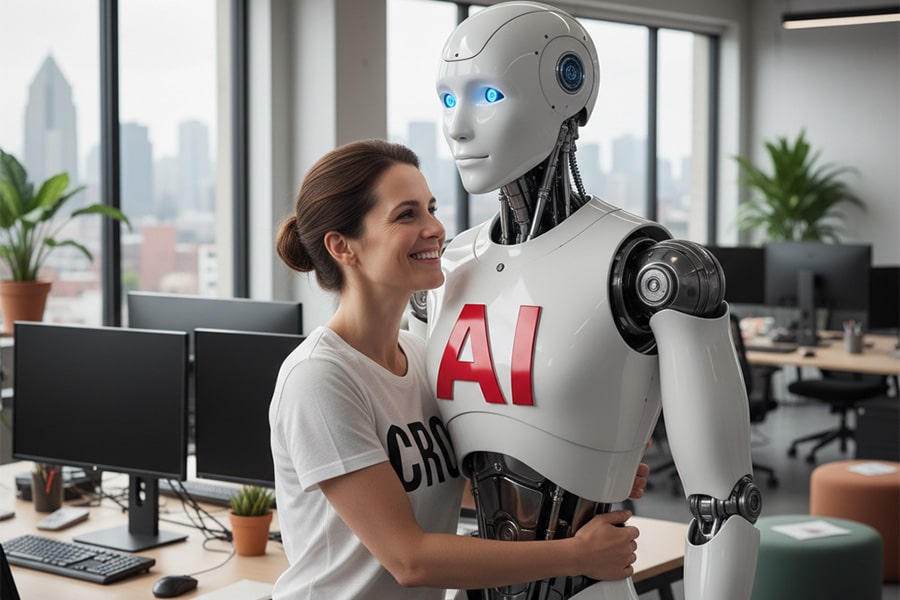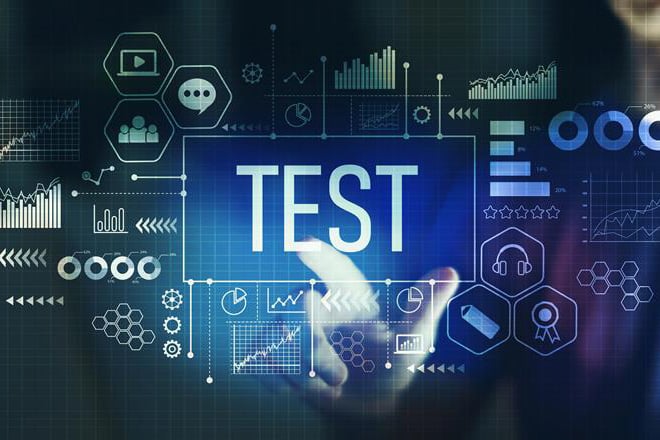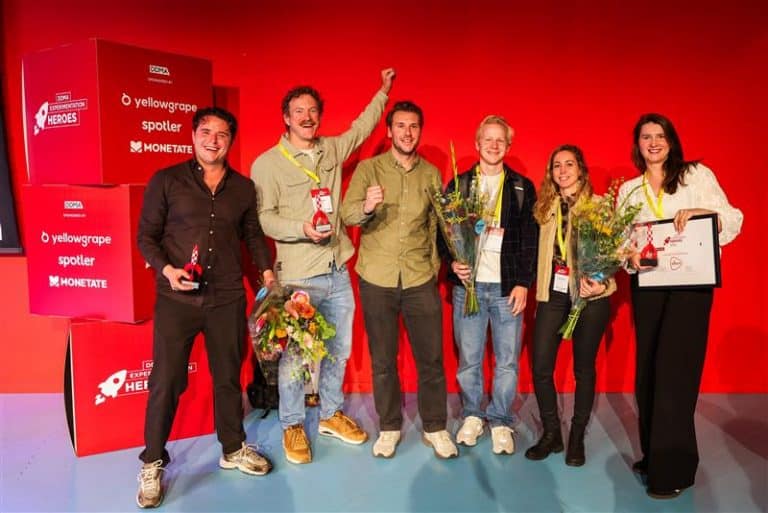
From threat to opportunity
Where AI was once seen as a threat, it now unlocks unprecedented opportunities within the CRO profession. The power of AI enables us to quickly recognize patterns in massive data sets, predict outcomes, and automate entire workflows: from creating test plans to analyzing results. Websites can be instantly scanned for best practices and persuasion tactics, experiments are developed and implemented faster, and real-time personalization at scale becomes a reality. Even simulating target audiences with synthetic users is now possible. In short: research and experimentation become cheaper, easier, and far more scalable.
This shift paves the way for a true culture of experimentation and research, not just online but across all channels. Thanks to AI, the impact of CRO and experimentation is more visible, and the discipline becomes accessible to organizations of any size, regardless of budget or traffic volume. Hyper-personalization delivers unique user experiences, while creative concepts can be validated faster and more effectively. CRO is rapidly evolving from a ‘nice-to-have’ into a true ‘must-have’ for any organization aiming for growth.
CRO process: then vs tomorrow
As mentioned above, AI is increasingly affecting the ways we do our work. Let’s make a comparison of all steps in a traditional CRO process and see how the pre-AI era compares to working with AI as an optimizer.
| CRO Phase | Pre-AI Era | With AI |
| Quantitative analysis | Deepdiving into UA/GA4 data | Chatting with data using MCP |
| Qualitative analysis | Manually labelling of output | Automated pattern recognition |
| Forming a hypothesis | Use IF, THEN, BECAUSE format | AI-generated suggestions (in IF, THEN, BECAUSE format) |
| Creating a test plan | Designing variations by hand | Prompting design based on hypothesis |
| Development | Development of variations by front-end developer | Prompting own code based on test plan |
| QA | Checking own devices and Browserstack | Automated cross-browser testing and AI-bug detection |
| Live | 2-4 full weeks of test duration required | Possible to get instant results with synthetic testing |
| Monitoring | Weekly monitoring of Looker dashboards or GA4 reports | Instant alerts and anomaly detection |
| Test analysis | Manual analysis and significance calculation, input to report | Fully automated report (incl. significance calculation) |
| Recommendation | Determine follow-up based on analysis report | AI-generated suggestion for follow-up steps |
In short, the CRO process with AI becomes faster and easier. This improved efficiency allows teams to increase testing velocity and thus also enhance learnings and make more impact. The power of AI also makes it possible to do more in-depth analyses that were not possible or too time consuming before, opening up tons of new insights for hypotheses.
Practical application of AI within CRO
As I mentioned before, the possibilities of AI are endless. From automating entire workflows, using prompts to scan websites in seconds and using AI to analyse big data sets. But to make it concrete, here are some examples of some more advanced, but practical applications of AI within CRO.
Synthetic users
One of the most exciting innovations powered by AI is the rise of synthetic users: virtual, data-driven personas that mimic real visitor behavior. Instead of waiting for enough real users to complete your experiments, you can now simulate entire target audiences and test countless variations in a fraction of the time. Synthetic testing allows you to spot usability issues, forecast conversion outcomes, and understand how different personas interact with your site long before you launch changes. This approach accelerates learning, reduces risk, and means you can validate ideas even with low traffic or tight deadlines. In short: synthetic users put the power of large-scale experimentation into every CRO team’s hands. For a more extensive deepdive on synthetic users I kindly refer you to the whitepaper written by Leonie Eckhardt.
Predictive eye-tracking
Predictive eye-tracking, powered by AI, is transforming how CRO specialists analyze user attention. Instead of relying solely on tools like Hotjar or Clarity (which require scripts, user consent, and large amounts of real visitor data) predictive eye-tracking uses machine learning models to forecast where users are most likely to look on a page. This technology delivers instant heatmaps and attention maps, without any implementation or waiting for traffic. It’s privacy-friendly, cost-effective, and perfect for rapid prototyping or testing new designs before launch. By leveraging predictive eye tracking, you gain deep visual insights at every stage of the CRO process: no code, no waiting, and no extra budget required. For this you can use tools like Attention Insight or Expoze. To be clear, these can be additions to the toolstack, actual click behavior and screen recordings are still a very valuable source of insights.
Automated pattern recognition
AI-powered pattern recognition is revolutionizing the analysis of spontaneous user feedback; think of customer service logs, chat transcripts, and reviews. Where manual reading and labeling used to take hours, machine learning algorithms can now rapidly identify recurring themes, sentiments, and pain points across large volumes of unstructured data. This means you’ll uncover hidden trends and common frustrations that traditional surveys often miss. The result: immediate, data-driven insights to inform your CRO priorities and enable faster, more targeted optimizations. Automated pattern recognition turns every piece of customer feedback into valuable and actionable insights to improve conversion rates and user experience.
Four levels of AI Adoption in CRO
The AI adoption maturity model in CRO illustrates the evolution from basic awareness of AI to a stage where AI autonomously drives optimization and decision-making. As organizations progress through the levels, the role of the human shifts from leading and making all decisions to collaborating with AI and ultimately supervising AI-led processes. Meanwhile, AI moves from being an occasional tool to a fully proactive and independent partner, transforming how insights are generated and acted upon. This progression enables organizations to enhance their optimization efforts, speed up decision-making, and unlock new levels of efficiency and impact. This model helps organizations identify their current position and plan actionable steps toward leveraging AI for greater impact. We identify four levels of AI-maturity:
- AI-aware – Occasional experiments, AI used sporadically
- AI-enabled – AI automates tasks, humans make the decisions
- AI-enhanced – AI provides insights, humans direct and validate
- AI-driven – AI makes decisions and optimizes autonomously, humans oversee

Why we go for AI-Enhanced
While it may seem logical to aim for the fourth level of maturity, we currently believe that being AI-Enhanced is where you want to be as a CRO specialist. This is due to the fact that we believe it is (currently) important to stay in control as a human specialist. We see too many instances still where AI is simply wrong or just not taking all factors (like branding needs or organizational challenges) into consideration. Moreover, the AI-Enhanced phase allows you to fully leverage the speed and analytical capabilities of AI, while ensuring that strategic decisions are grounded in human expertise and contextual understanding. This balance minimizes risk and maximizes the impact of both technology and human judgement, resulting in more reliability and context.
The AI-Enhanced CRO Specialist
The AI-Enhanced CRO specialist is someone who enhances their expertise and creativity through smart use of AI tools, rather than being replaced by automation.
In short:
- You use AI to perform faster, smarter, and deeper analyses, generate hypotheses, and set up experiments.
- But you, as a human, remain indispensable for interpretation, strategy, creative problem-solving, and asking the right questions.
- You determine the direction; AI is your “force multiplier” (multiplying your impact).
To put it briefly: as a specialist, you don’t become redundant, but rather more valuable because you leverage AI to deliver more and better work, while adding the human nuance, ethics, and customer insight that AI lacks.
Example in a CRO context:
- AI identifies patterns in data, but you determine which KPIs, metrics and hypotheses are truly relevant.
- AI automates A/B tests, but you evaluate the results within the context of brand, customer experience, and strategy.
- AI personalizes, but you ensure it aligns with brand identity and ethical frameworks.
Bottom line:
AI-enhanced = human + machine, with the human remaining in control.
What’s next?
The honest answer is: we don’t know. Technology and possibilities are evolving rapidly, so it’s crucial to keep adapting. Still, you should define a clear direction for AI adoption within your organization. That way, all AI-related initiatives contribute to the same vision and goals. As discussed, AI creates new opportunities for CRO by making research and experimentation easier, faster, and more accessible, thus fostering a broader culture of experimentation. The best advice: get started, experiment and be critical. See how AI can enhance your capabilities as an optimizer. Don’t expect instant results but rather treat it as an ongoing experiment: start small, learn, and improve over time. Also, don’t simply rely on the output. Stay critical and use your expertise as guidance towards the best possible outcome.
Ook interessant

Incrementality Testing: Onmisbaar voor echte inzicht in mediawaarde

Odido, ANWB en PostNL winnen DDMA Experimentation Heroes 2025


